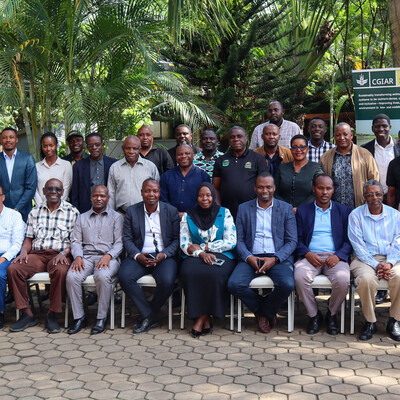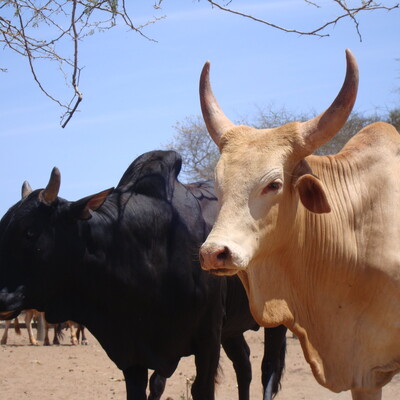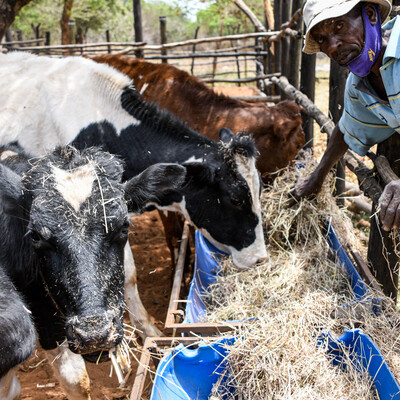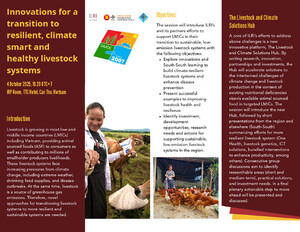
The Gambia launches five-year livestock master plan for national development
The government of the Gambia, through the Small Ruminant Production Enhancement Project (SRPEP) in collaboration with the International Livestock Research Institute (ILRI) has launched a livestock master plan (LMP) to guide livestock sector development in the West African country.
The Gambia’s economy relies heavily on agricultural activities which include fishing, crop and livestock farming. The livestock sector alone contributes 40% of the agricultural gross domestic product (GDP) and employs the greatest number of people after the crop subsector. Like in other low- and middle-income countries (LMICs), the livestock sector plays an important role in enhancing food security and nutrition as well as poverty alleviation, particularly for vulnerable households.
‘The five-year livestock master plan is expected to serve as a blueprint to increase support for the livestock sector by attracting more targeted investment from finance ministries, development partners and the private sector,’ said Sirak Bahta, who led the project at ILRI.
Demba Sabally, the Gambian Minister for Agriculture, said the livestock master plan will guide the government to modernize the livestock sector so that it achieves the goals of livestock farmers. It will ensure sustainable contributions to the sector’s development in line with the country’s National Development Plan.
Cattle, sheep, goats, donkeys, horses, pigs, poultry and bees are the most important animals in the country, but the livestock sector is constrained by widespread animal diseases, shortage of animal feed, particularly during the dry season, poor production due to low genetic performance of the indigenous breeds, poor infrastructure, poor access to extension, veterinary services, poor livestock research and innovation capacities; lack of access to affordable and reliable financing schemes and weak capacity of the relevant sector institutions.
In seeking to address these challenges, the Gambia LMP focuses on three key livestock value chains namely cattle, small ruminants, and poultry. It highlights the major interventions which could help achieve the country’s future objectives and targets. ‘Some of the key interventions proposed include more engagement of the private sector to spur increased investment in the feed and animal health industries as well as addressing the existing market gaps for animal-source foods,’ said Shirley Tarawali, ILRIs deputy director general.
Mamud Njie, the SRPEP project director, added that the livestock master plan will ‘inform decisions made on investments to reduce poverty, increase economic growth and improve food and nutrition security, leading to improved livelihoods through livestock.’
The Gambia LMP includes a livestock sector analysis (LSA), livestock sector survey (LSS) and investment roadmaps produced through a quantitative analysis using a herd and economic sector model (HESM). The HESM was developed by experts from the state’s Ministry of Agriculture and the ILRI team.
Bahta thanked the Islamic Development Bank for funding the work, noting that the livestock sector analysis made possible the elaboration of the detailed five-year investment plans, which make up the livestock value chain roadmaps, each having focused interventions, investment budget activities and time plans.
ILRI has for the past decade been helping countries develop roadmaps for their livestock sectors upon request, in collaboration with the Food and Agriculture Organization of the United Nations (FAO) and the French Agricultural Research Centre for International Development (CIRAD).
Isabelle Baltenweck, leader of ILRI’s Policies, Institutions and Livelihoods program under which the LMP was conducted, further appreciated the partners for their collaboration in developing the Gambia livestock policies, which are available online on the following links.
The Gambia Livestock Master Plan
The Gambia Livestock Sector Strategy
The Gambia Livestock Sector Analysis



















